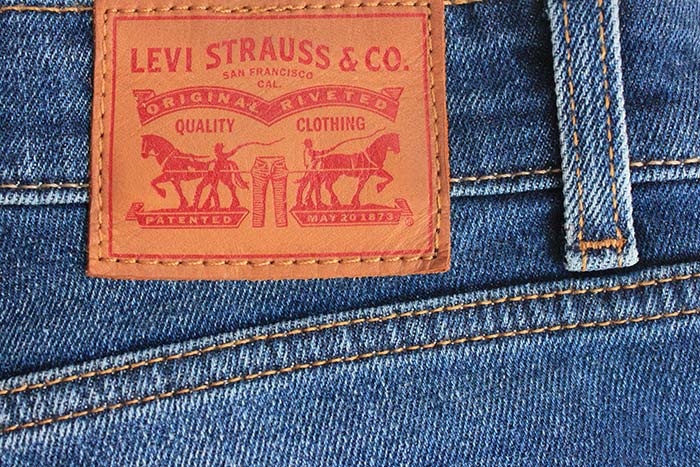Levi Strauss & Co. (NYSE: LEVI) has been a household name for generations, but its recent stock performance has been anything but steady.
The stock has been on quite a roller coaster ride over the past year. It spent much of late 2023 and the first half of 2024 in a consistent uptrend, climbing from lows around $13 to a peak above $24 – an impressive 85% surge in just eight months.
However, the rally proved short-lived, with the stock suddenly plummeting over 25% to its current price near $18.
This sharp reversal raises some eyebrows. It might just reflect broader concerns about consumer spending in a potentially slowing economy… or it might point to more company-specific issues.
With the shares trading at a discount to recent highs, are they a compelling investment? Let’s run this iconic denim maker through The Value Meter to find out.
At first glance, Levi’s looks like it could be undervalued. Its enterprise value-to-net asset value (EV/NAV) ratio sits at 4.53, well below the average of 10.95 for companies with positive net assets. This suggests that you could theoretically acquire the entire business for less than half of what you’d pay for the average company.
But as I always remind you, a low EV/NAV alone doesn’t make a stock a screaming buy. We need to look at cash flow generation to get the full picture.
Levi’s has performed decently on that front, as it churned out positive free cash flow in three of the past four quarters. Its average quarterly free cash flow clocked in at 7.76% of its net assets during that span – modestly above the 7.26% average for firms with similar cash flow patterns.
The company’s second quarter results offer additional insight. Revenue grew 7.8% year over year to $1.4 billion, driven by an 8.2% increase in direct-to-consumer (DTC) sales. Gross margins also hit a record 60.5%, up from 58.7% in the second quarter of 2023.
This expansion, coupled with cost control measures, led to adjusted EBIT (earnings before interest and taxes) of $87 million, a huge improvement from $31.5 million in the same quarter a year prior.
So while Levi’s isn’t exactly printing money, it’s generating cash at a respectable clip. The company’s consistent cash generation also supports a 3% dividend yield, with a payout ratio of 36.1% of its forward earnings suggesting sustainability.
However, Levi’s is facing some challenges.
The fashion retail sector is notoriously fickle, requiring companies to constantly innovate in order to maintain market position. Additionally, lingering inflation and recession fears could pressure consumer spending on discretionary items like clothing.
The company’s brand strength and global reach provide some insulation against these risks, though, and its expansion of its DTC business (which now accounts for 47% of total revenue) should help margins as long as it’s executed well.
When we balance the company’s attractive valuation and steady cash flow against the inherent risks in its industry, the stock lands squarely in “fair value” territory.
Unsurprisingly, The Value Meter rates Levi Strauss & Co. as “Appropriately Valued.” While the stock isn’t a table-pounding bargain, it’s also not wildly overpriced.

What stock would you like me to run through The Value Meter next? Post the ticker symbol(s) in the comments section below.

